Wellness & Productivity

Effective time management is crucial when preparing for certifications, whether you're an employee or a student. Here are some tips to help you manage your time efficiently:
Tips 1
Set Clear Goals

Setting clear goals is essential for guiding your actions, staying focused, and achieving success. By defining specific, measurable, achievable, relevant, and time-bound (SMART) goals, you can clarify your objectives and create a roadmap for your journey towards success.
- Specific: Clearly define your goals in precise and concrete terms, specifying what you want to accomplish and why it's important.
- Measurable: Establish criteria or metrics to track progress and evaluate success, allowing you to measure your achievements objectively.
- Achievable: Set realistic and attainable goals that stretch your abilities but are within your reach with effort and commitment.
- Relevant: Ensure that your goals align with your values, interests, and long-term objectives, making them meaningful and impactful in your personal or professional life.
- Time-bound: Assign deadlines or target dates to your goals to create a sense of urgency and accountability, motivating you to take action and make progress.
- Write Down Your Goals: Document your goals in writing to solidify your commitment and enhance clarity and accountability.
- Break Down Goals: Divide larger goals into smaller, actionable steps or milestones to make them more manageable and easier to achieve.
- Review and Adjust: Regularly review your goals, assess your progress, and make necessary adjustments to stay on track and aligned with your aspirations.
- Stay Focused: Keep your goals visible and stay focused on them, prioritizing activities and decisions that support their attainment while minimizing distractions.
- Celebrate Milestones: Celebrate your achievements and milestones along the way to stay motivated and reinforce positive progress.
Tips 2
Create a Schedule
Creating a schedule is essential for effective time management and productivity. By allocating specific time slots for various activities and tasks, you can prioritize your responsibilities, maximize efficiency, and make steady progress towards your goals.
- Define Your Priorities: Identify your most important tasks and goals, ensuring they receive dedicated time in your schedule.
- Allocate Time Blocks: Divide your day into blocks of time for different activities, such as work, study, exercise, relaxation, and personal time.
- Be Realistic: Set realistic expectations for what you can accomplish within each time block, considering factors like task complexity and your energy levels.
- Use a Calendar or Planner: Utilize digital or physical tools such as calendars, planners, or scheduling apps to organize and manage your schedule effectively.
- Set Regular Routines: Establish consistent routines for waking up, starting work or study sessions, taking breaks, and winding down at the end of the day.
- Factor in Flexibility: Allow for flexibility in your schedule to accommodate unexpected events, interruptions, or changes in priorities.
- Block Distraction-Free Time: Dedicate specific time blocks for focused work or study without distractions, such as turning off notifications and minimizing interruptions.
- Include Buffer Time: Schedule buffer time between tasks or appointments to account for unforeseen delays or to allow for transitions between activities.
- Review and Adjust: Regularly review your schedule, assess your progress, and make adjustments as needed to optimize your time management and productivity.
- Stick to Your Schedule: Commit to following your schedule as much as possible, staying disciplined and focused on completing tasks according to their allotted time slots.
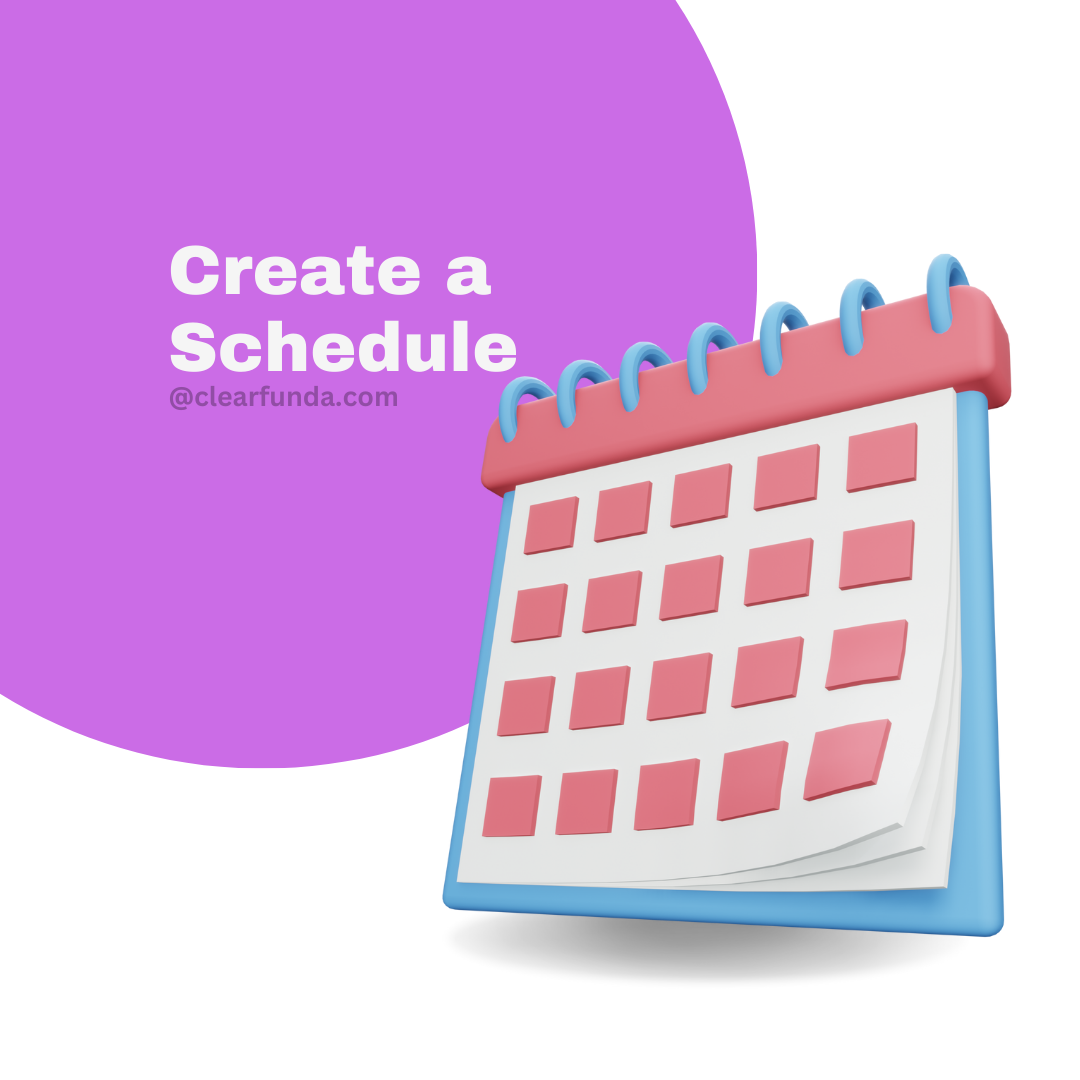
Tips 3
Identify Peak Productivity Hours
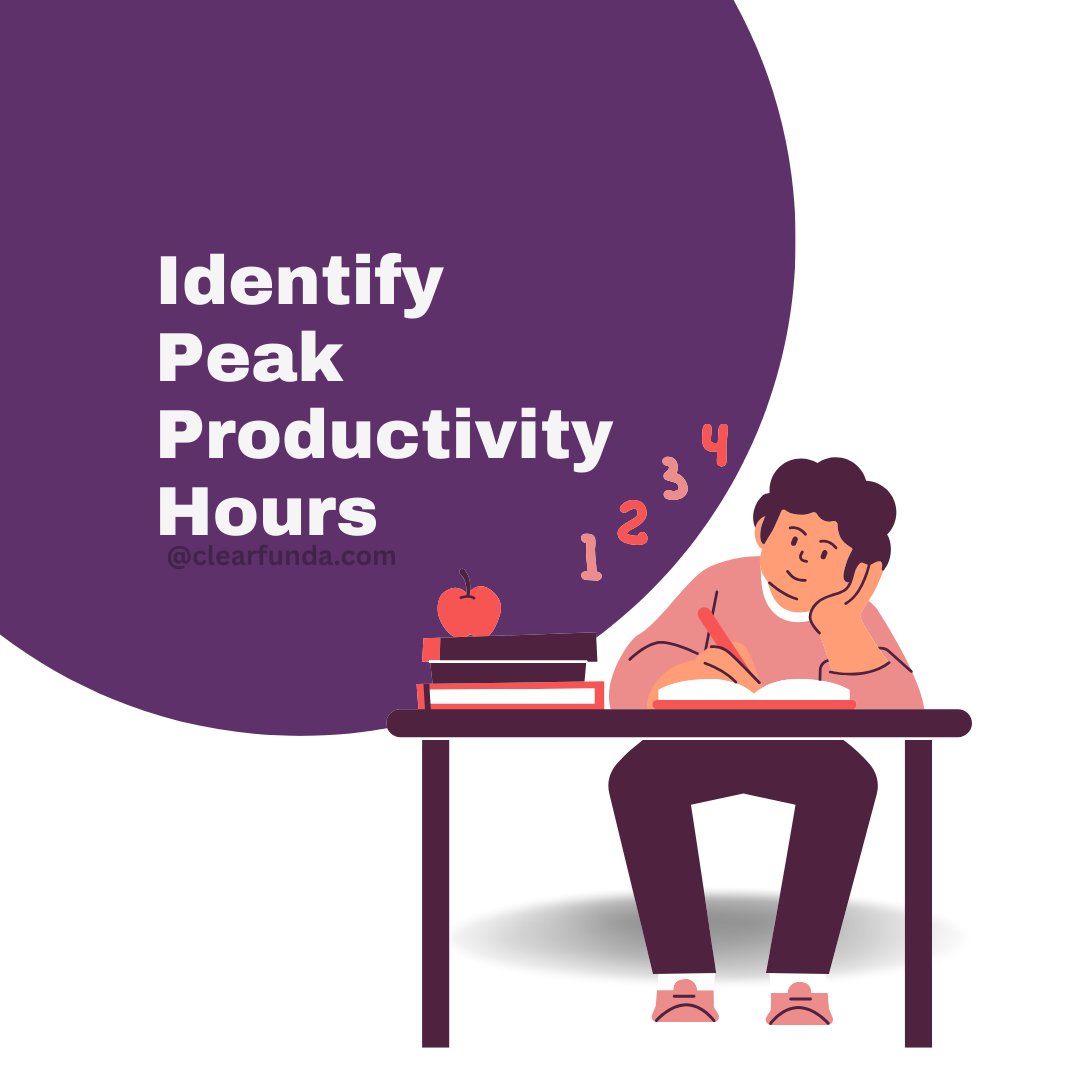
Understanding and leveraging peak productivity hours is important for optimizing time management and productivity. Identifying these periods helps maximize efficiency and achieve better outcomes in your endeavors.
- Determining Peak Productivity Hours: Identify the times of day when you feel most alert, focused, and energetic.
- Individual Variation: Understand that peak productivity hours vary among individuals due to factors like circadian rhythms, lifestyle, and personal preferences.
- Scheduling Tasks: Schedule challenging or critical tasks during your peak productivity hours to enhance efficiency and performance.
- Optimizing Performance: Leverage your natural energy levels and cognitive abilities during these periods to accomplish tasks more effectively.
- Maximizing Efficiency: By recognizing and utilizing your peak productivity hours, you can improve productivity and achieve better outcomes in your endeavors.
Tips 4
Use Time Blocking
Time blocking is a powerful time management technique that involves scheduling specific blocks of time for different tasks or activities throughout your day. By allocating dedicated time slots for each task, you can enhance focus, productivity, and efficiency.
- Enhanced Focus: Time blocking allows you to concentrate fully on one task at a time without distractions, leading to improved focus and concentration.
- Increased Productivity: By organizing your day into structured blocks of time, you can optimize productivity and accomplish more tasks efficiently.
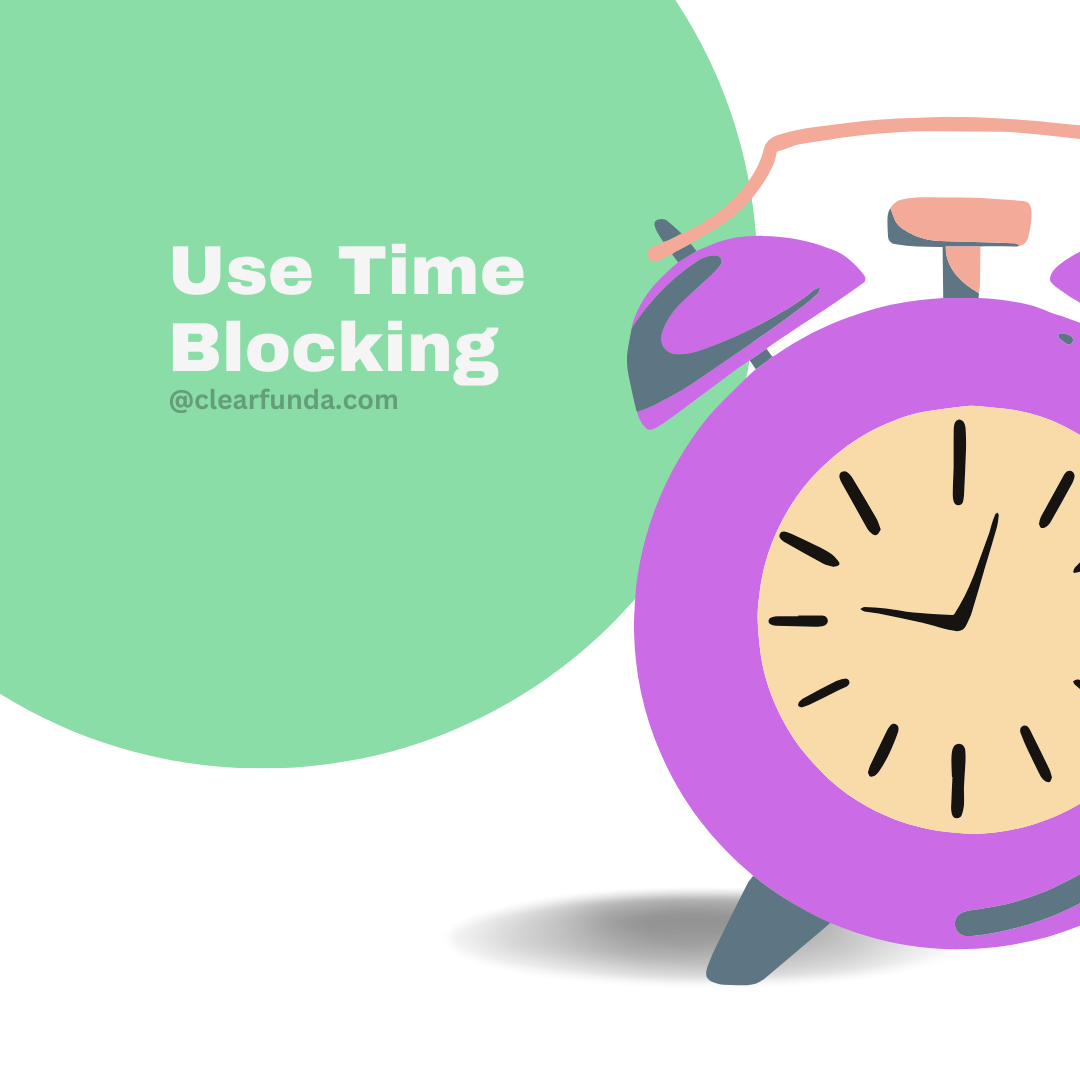
Tips 5
Eliminate Distractions

Eliminating distractions is essential for maintaining focus and productivity. By minimizing interruptions and external stimuli, you can enhance concentration and efficiency in your work.
- Identify Distraction Sources: Recognize potential distractions such as social media, emails, or noise, and take steps to minimize their impact.
- Set Boundaries: Establish boundaries by creating designated workspaces and times free from distractions, allowing for uninterrupted focus.
- Utilize Technology Tools: Make use of productivity apps, website blockers, or noise-canceling headphones to limit distractions and maintain concentration.
- Practice Mindfulness: Cultivate mindfulness techniques to stay present and focused on the task at hand, reducing the influence of distractions.
Tips 6
Prioritize Tasks
Prioritizing tasks is crucial for effective time management and productivity. By identifying and focusing on the most important and urgent tasks, you can make efficient use of your time and resources.
- Evaluate Importance and Urgency: Assess tasks based on their significance and deadlines to determine their priority level.
- Use Prioritization Techniques: Employ strategies like the Eisenhower Matrix or ABC prioritization to categorize tasks according to their importance and urgency.
- Focus on High-Value Activities: Direct your attention to tasks that align with your goals and have the greatest impact on your success.
- Allocate Time Wisely: Dedicate more time and resources to tasks that contribute the most to your objectives, while delegating or postponing less critical activities.
- Stay Flexible: Be prepared to adjust priorities as circumstances change, ensuring that you remain adaptable and responsive to evolving needs and deadlines.
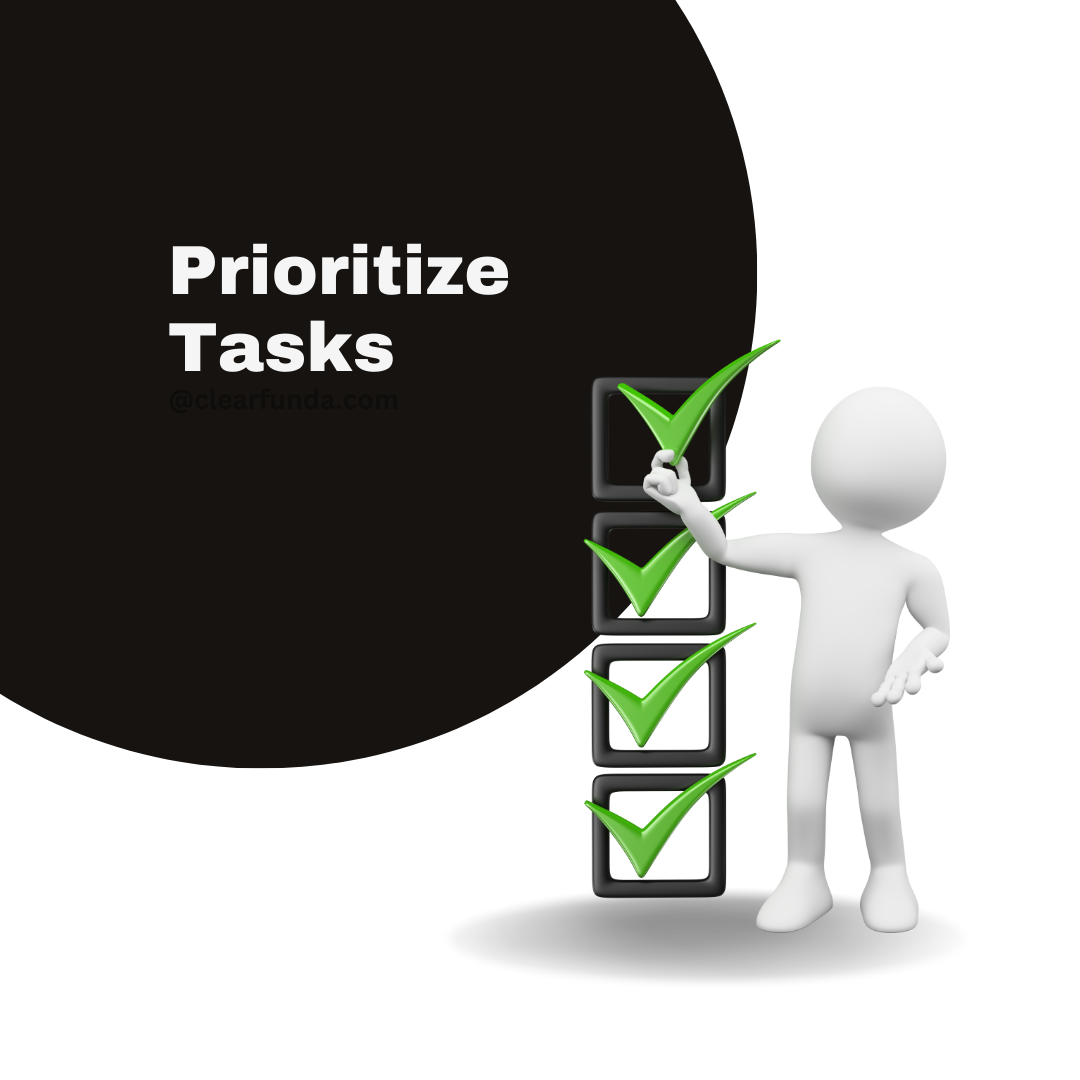
Tips 7
Break Tasks into Smaller Steps
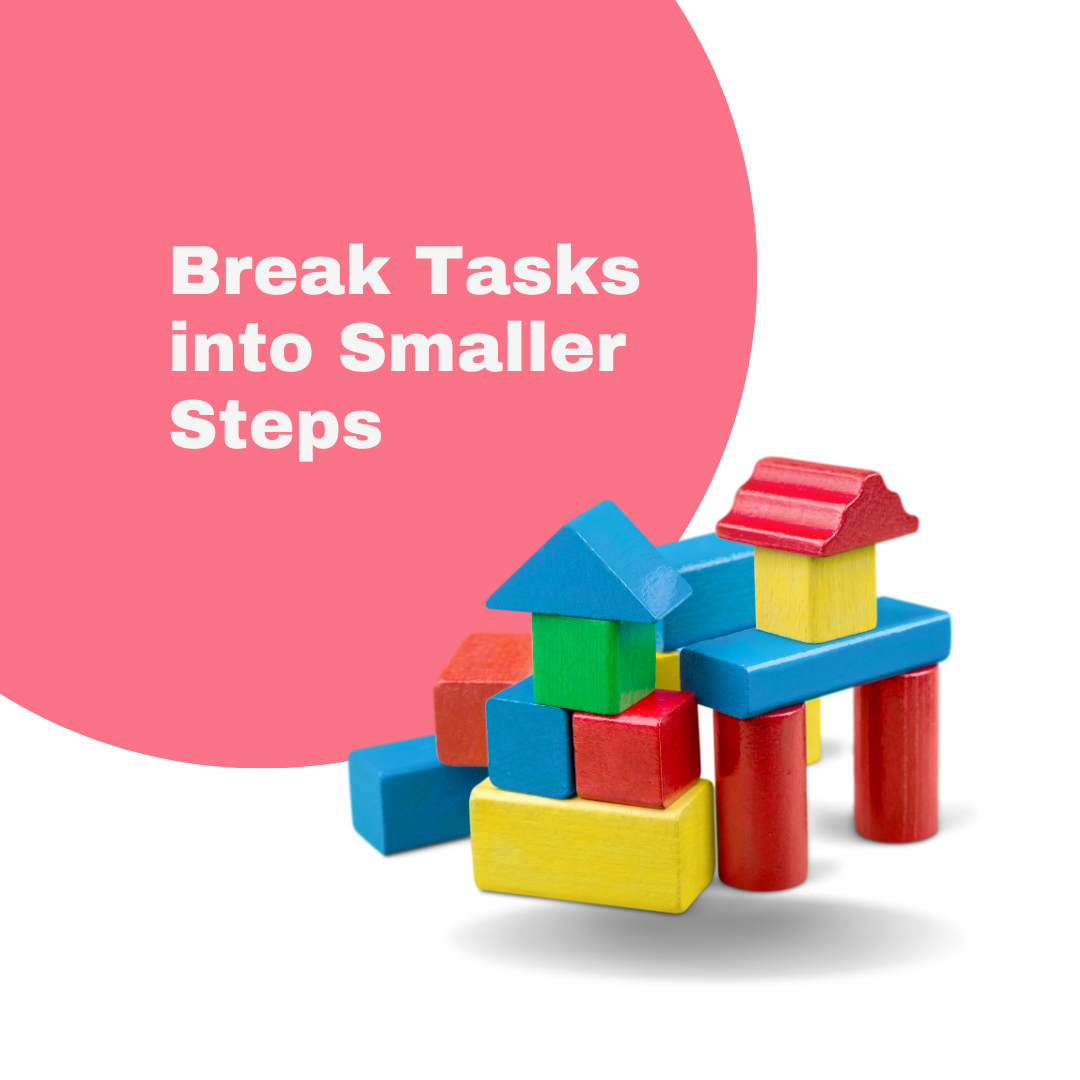
Breaking tasks into smaller steps is a key strategy for enhancing productivity and managing workload effectively. By dividing larger tasks into more manageable components, you can overcome procrastination, maintain momentum, and achieve your goals more efficiently.
- Identify Components: Analyze complex tasks and identify the specific actions or subtasks required to complete them.
- Set Milestones: Establish intermediate goals or milestones to track progress and maintain motivation throughout the task.
- Define Clear Objectives: Clearly define the desired outcome for each step, ensuring clarity and focus in execution.
- Allocate Resources: Determine the resources, time, and effort needed for each subtask, allowing for better planning and allocation of resources.
- Manage Overwhelm: Breaking tasks into smaller steps reduces feelings of overwhelm and makes the overall task more approachable and achievable.
Tips 8
Practice Time Estimation
Practicing time estimation is essential for effective time management and task planning. By accurately assessing how long tasks will take to complete, you can allocate your time more efficiently, avoid overcommitment, and meet deadlines more effectively.
- Break Down Tasks: Divide tasks into smaller components to better understand the time required for each step.
- Consider Past Experience: Reflect on previous similar tasks to gauge how long they took to complete and use this as a reference for future estimations.
- Use Time Tracking Tools: Utilize time tracking apps or tools to monitor how much time you spend on different activities and improve your estimation accuracy over time.
- Factor in Contingencies: Account for potential interruptions, delays, or unexpected issues that may arise during task execution when estimating time.
- Regularly Review and Adjust: Continuously evaluate your time estimations against actual performance and adjust your approach accordingly to improve accuracy.
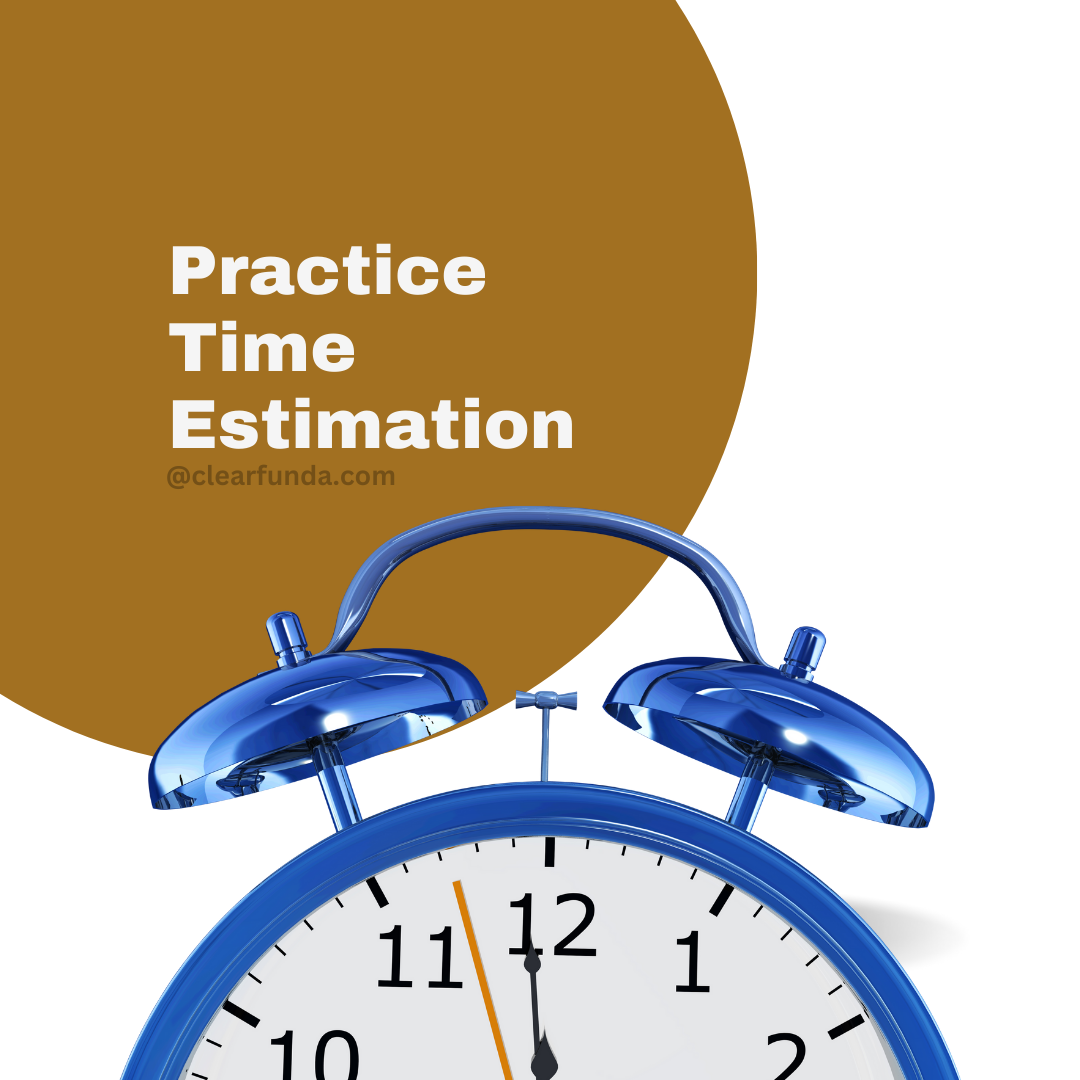
Tips 9
Take Regular Breaks
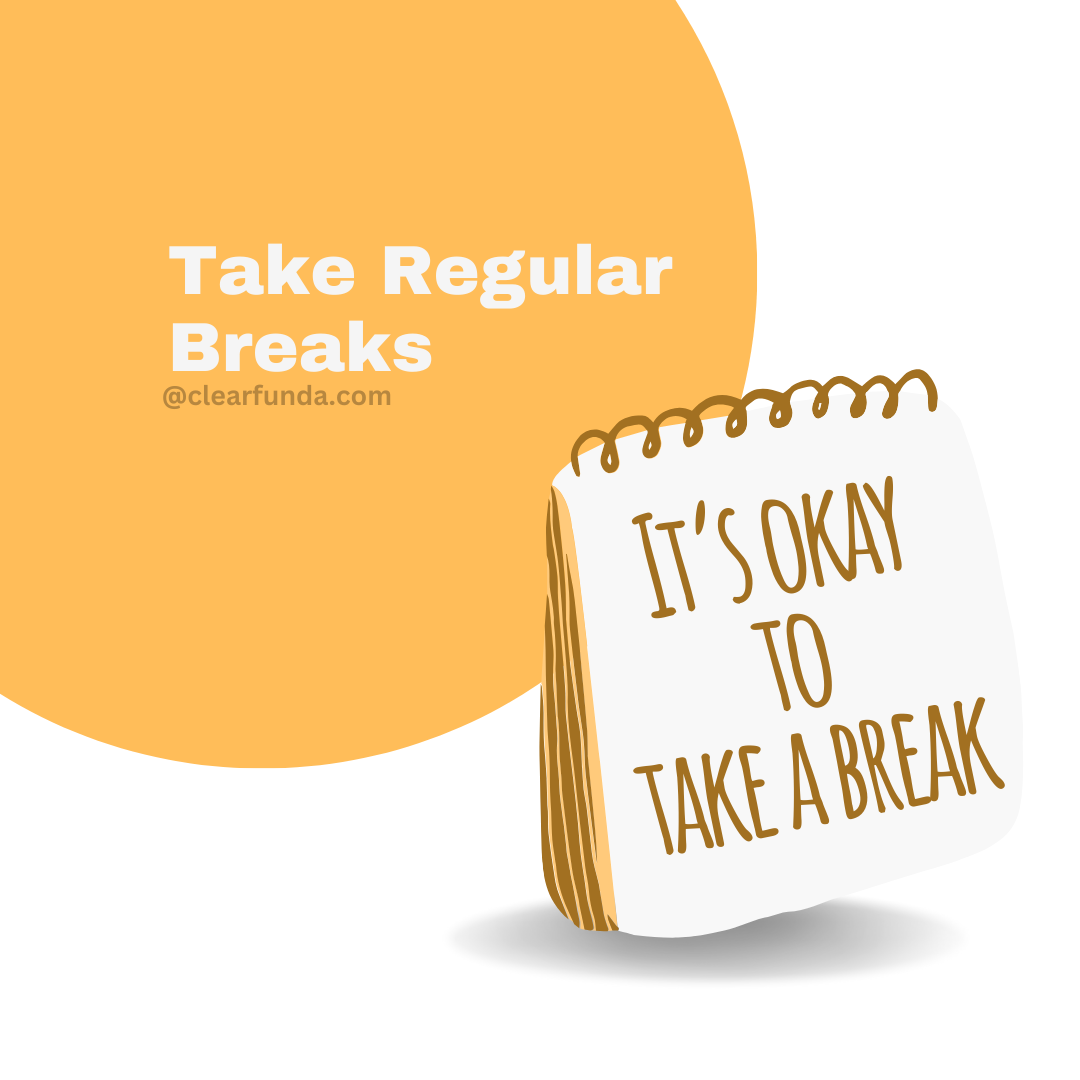
Taking regular breaks is essential for maintaining productivity, focus, and overall well-being. By incorporating short periods of rest and relaxation into your work routine, you can recharge your energy levels, reduce mental fatigue, and enhance your ability to concentrate on tasks effectively.
- Enhanced Focus: Regular breaks prevent burnout and help sustain concentration and attention span over extended periods of work.
- Improved Creativity: Breaks provide opportunities for mental rejuvenation, allowing for fresh perspectives and ideas to emerge.
- Physical Well-being: Taking breaks encourages movement and reduces the negative effects of prolonged sitting, promoting overall physical health.
- Stress Reduction: Breaks offer moments of relaxation and stress relief, helping to alleviate tension and prevent feelings of overwhelm.
- Productivity Boost: Contrary to common belief, regular breaks can enhance productivity by maintaining cognitive function and preventing mental fatigue.
- Strategic Breaks: Schedule breaks at strategic intervals, such as every hour or after completing a specific task, to maximize their effectiveness.
- Mindful Rest: Use break time mindfully by engaging in activities that promote relaxation, such as deep breathing, stretching, or taking a short walk.
- Customize Breaks: Tailor break durations and activities to suit your personal preferences and energy levels, ensuring they align with your individual needs.
Tips 10
Stay Organized
Staying organized is fundamental for effective time management and productivity. By maintaining order and structure in your tasks, workspace, and schedule, you can streamline workflows, minimize distractions, and maximize efficiency.
- Clear Workspace: Keep your workspace clutter-free and organized to minimize distractions and promote focus.
- Use Tools and Systems: Employ digital or physical organizational tools such as calendars, to-do lists, or project management software to manage tasks and deadlines efficiently.
- Establish Routines: Develop consistent routines for planning, prioritizing, and executing tasks to establish a sense of order and consistency in your workflow.
- File Management: Implement a logical file organization system for digital and physical documents to easily locate and access information when needed.
- Time Blocking: Allocate specific time blocks for different activities, ensuring that each task receives dedicated attention and prevents multitasking.
- Review and Reflect: Regularly review your progress, adjust priorities, and reflect on your organizational strategies to identify areas for improvement and optimization.
- Delegate Tasks: Delegate tasks that can be completed by others, freeing up your time to focus on high-priority activities and responsibilities.
- Balance Work and Life: Maintain a healthy work-life balance by scheduling time for relaxation, hobbies, and personal activities alongside work commitments.
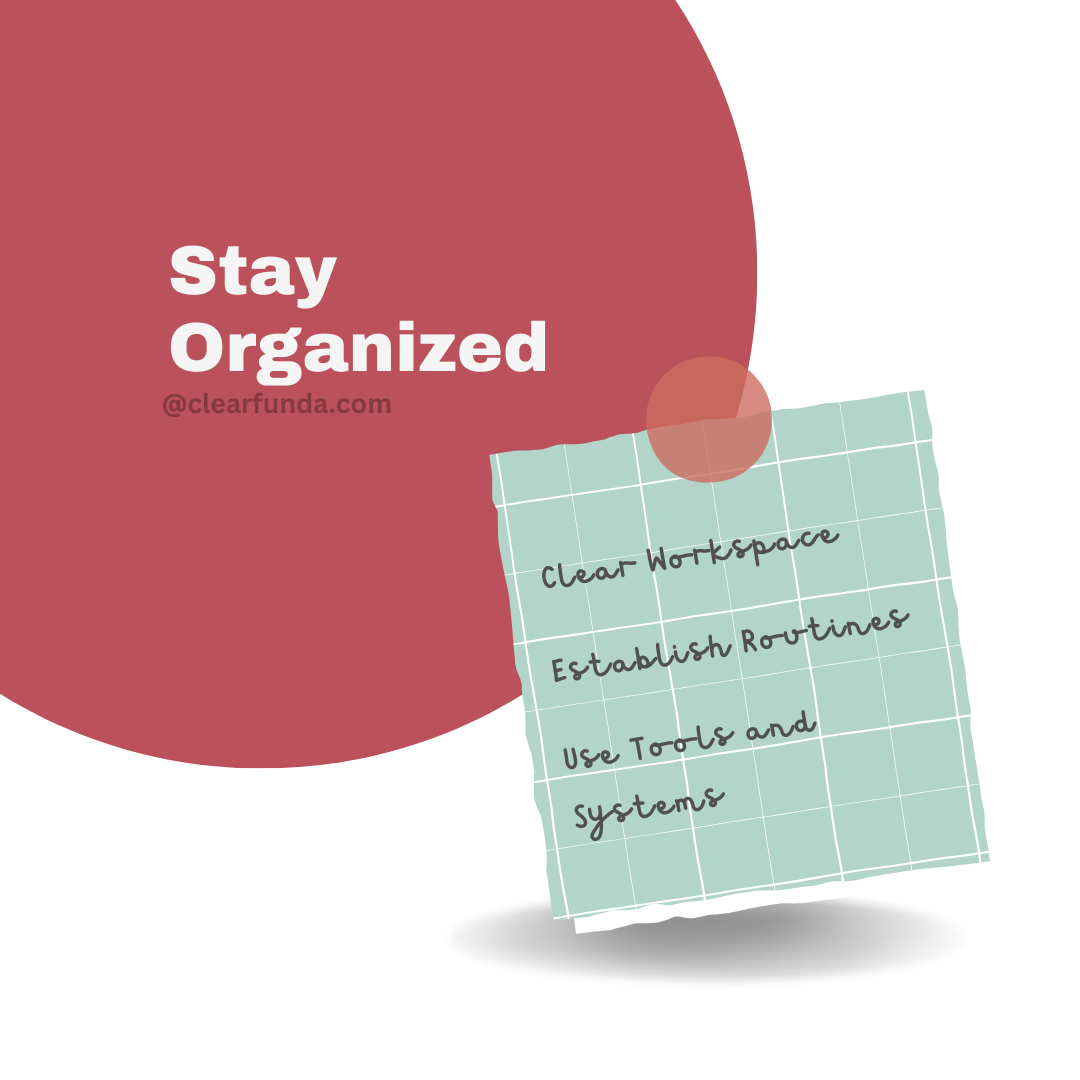
Tips 11
Use Effective Study Techniques

Utilizing effective study techniques is crucial for optimizing learning and retention. By employing strategies that align with your learning style and goals, you can enhance comprehension, memory retention, and academic performance.
- Active Learning: Engage actively with the material by summarizing key concepts, asking questions, and applying knowledge through practice exercises or discussions.
- Spaced Repetition: Review and revisit material at spaced intervals over time to reinforce learning and enhance long-term retention.
- Chunking: Break down complex information into smaller, more manageable chunks to facilitate understanding and memorization.
- Visual Aids: Use visual aids such as diagrams, charts, or mind maps to represent information visually and enhance comprehension.
- Teach Others: Teach or explain concepts to others, as doing so reinforces understanding and highlights areas for further clarification.
- Practice Testing: Test yourself regularly on the material through quizzes, flashcards, or practice exams to assess comprehension and identify areas of weakness.
- Active Recall: Test your memory by recalling information from memory without referring to notes or textbooks, which strengthens retention and retrieval abilities.
- Study Environment: Create a conducive study environment free from distractions and conducive to concentration, such as a quiet room or designated study space.
- Time Management: Allocate dedicated study sessions in your schedule and break up study sessions into manageable intervals to maintain focus and avoid burnout.
- Reflection: Reflect on your learning process, evaluate what techniques work best for you, and adapt your approach accordingly to optimize study effectiveness.
Tips 12
Stay Flexible
Staying flexible is essential for adapting to changing circumstances, managing uncertainties, and maintaining resilience in your approach to tasks and goals. By embracing flexibility, you can navigate challenges more effectively, remain open to new opportunities, and achieve greater success in your endeavors.
- Adaptability: Embrace change and be willing to adjust your plans, strategies, and timelines in response to evolving circumstances or unexpected events.
- Open-mindedness: Maintain an open mind and consider alternative perspectives, approaches, or solutions to overcome obstacles and seize new opportunities.
- Resilience: Cultivate resilience by bouncing back from setbacks, setbacks, and failures with a positive attitude and determination to learn and grow from experiences.
- Manage Uncertainty: Develop strategies to cope with uncertainty and ambiguity, such as setting realistic expectations, focusing on what you can control, and seeking support when needed.
- Prioritize: Identify priorities and focus your energy on tasks and goals that align with your values, objectives, and long-term vision, while remaining flexible in your approach to achieving them.
- Iterative Approach: Embrace an iterative approach to problem-solving and decision-making, where you continuously evaluate and adjust your strategies based on feedback and new information.
- Balance: Strike a balance between structure and flexibility in your plans and routines, allowing for spontaneity, creativity, and adaptability while maintaining a sense of direction and purpose.
- Emotional Intelligence: Develop emotional intelligence skills to regulate emotions, manage stress, and navigate interpersonal relationships effectively, enhancing your ability to stay flexible in various situations.
- Learn from Experience: Reflect on past experiences, successes, and failures to glean insights and lessons that inform future decisions and actions, fostering continuous growth and development.

Tips 13
Get Adequate Rest

Getting adequate rest is crucial for overall well-being, cognitive function, and productivity. By prioritizing rest and incorporating sufficient sleep into your daily routine, you can improve concentration, memory, and decision-making abilities, as well as enhance mood and overall health.
- Quality Sleep: Aim for 7-9 hours of quality sleep per night to allow your body and mind to recharge and rejuvenate.
- Establish a Bedtime Routine: Create a consistent bedtime routine to signal to your body that it's time to wind down and prepare for sleep.
- Limit Screen Time: Minimize exposure to screens, such as smartphones, computers, and TVs, before bedtime to reduce the impact of blue light on sleep quality.
- Optimize Sleep Environment: Create a comfortable sleep environment that is conducive to rest, including a cool, dark, and quiet room, comfortable bedding, and minimal disruptions.
- Practice Relaxation Techniques: Incorporate relaxation techniques such as deep breathing exercises, meditation, or gentle stretching to promote relaxation and reduce stress before bedtime.
- Avoid Stimulants: Limit consumption of caffeine, nicotine, and alcohol, particularly in the hours leading up to bedtime, as they can interfere with sleep quality and duration.
- Listen to Your Body: Pay attention to your body's signals and prioritize rest when you feel fatigued or sleep-deprived, allowing for adequate recovery and rejuvenation.
- Power naps: Take short power naps of 20-30 minutes during the day to boost alertness and productivity, but avoid longer naps that can disrupt nighttime sleep patterns.
- Consistent Schedule: Maintain a consistent sleep-wake schedule, even on weekends, to regulate your body's internal clock and promote better sleep quality and overall well-being.
Tips 14
Seek Support
Seeking support is essential for managing challenges, fostering growth, and maintaining well-being. By reaching out to others for assistance, advice, or encouragement, you can gain valuable insights, perspective, and resources to navigate difficulties and achieve your goals more effectively.
- Identify Support Systems: Recognize and cultivate relationships with individuals, groups, or organizations that can provide emotional, practical, or professional support in times of need.
- Communicate Openly: Share your concerns, goals, and aspirations with trusted friends, family members, mentors, or colleagues, fostering open and honest communication.
- Ask for Help: Don't hesitate to reach out and ask for help when you encounter challenges or feel overwhelmed, as seeking assistance is a sign of strength, not weakness.
- Offer Support: Be willing to lend a helping hand and offer support to others in their time of need, fostering a culture of reciprocity and mutual assistance.
- Professional Guidance: Seek guidance from professionals, such as therapists, coaches, or mentors, who can provide expert advice, guidance, and strategies to address specific challenges or goals.
- Join Communities: Engage with online or local communities, forums, or support groups that share similar interests, experiences, or goals, offering a sense of belonging, understanding, and camaraderie.
- Utilize Resources: Take advantage of resources and services offered by your workplace, educational institution, or community, such as counseling services, employee assistance programs, or peer support networks.
- Practice Self-compassion: Be kind to yourself and recognize that it's okay to seek support and assistance when needed, prioritizing your well-being and personal growth.
- Follow Up: Express gratitude to those who offer support and follow up with them to provide updates on your progress and outcomes, maintaining and nurturing meaningful relationships over time.

By implementing these time management strategies, you can optimize your study routine and increase your chances of success in obtaining your certification. Remember to maintain a balance between studying and personal activities to prevent burnout and maintain overall well-being.